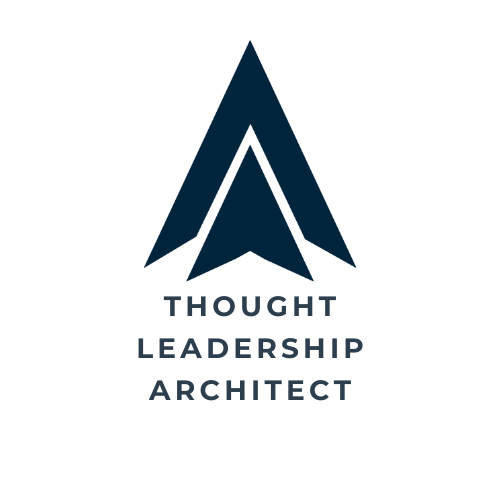Your cart is currently empty!
In today’s hyper-connected world, your personal brand is one of your most valuable assets. Whether you’re an entrepreneur, executive, or industry thought leader, your reputation shapes opportunities, influences trust, and defines your professional future. But as digital exposure increases, so do the risks.
Cancel culture, deepfakes, and misinformation are real threats to credibility and careers. A single misinterpreted comment, AI-generated fake video, or viral false accusation can severely damage a professional brand overnight.
So how can thought leaders, executives, and professionals protect their reputation in this fast-moving, high-stakes digital age? Let’s break it down.
As Warren Buffett famously said:
“It takes 20 years to build a reputation and five minutes to ruin it.”
1. The Risks of Digital Exposure: What You Need to Know
Cancel Culture: Reputation at Risk
Cancel culture—the practice of withdrawing support from individuals or brands over perceived missteps—has made many professionals cautious about what they say online. A misunderstood tweet from ten years ago? It can resurface. A comment taken out of context? It can go viral.
✔ Example: In 2023, a well-respected CEO was forced to step down after an old email resurfaced, taken out of context, leading to a wave of online backlash.
💡 Tip: Audit your past content and ensure it aligns with your current values. If something can be misinterpreted, address it proactively.
Deepfakes: When AI Puts Words in Your Mouth
AI technology has made it alarmingly easy to create deepfake videos, altering people’s images and voices in ways that can be dangerously deceptive.
✔ Example: In 2024, a deepfake video of Elon Musk promoting a fake crypto scam fooled thousands of investors before it was debunked.
💡 Tip: Secure your digital identity—enable two-factor authentication on social accounts and monitor mentions of your name using Google Alerts.
Misinformation: The Power of False Narratives
Social media spreads misinformation faster than facts. A misquote, fake headline, or misleading edit of an interview can spark widespread reputation damage before you even know it’s happening.
✔ Example: An AI-generated article falsely claimed a well-known doctor endorsed a dangerous health practice. It took weeks to correct the record, but the damage was already done.
💡 Tip: Have a crisis response plan—know who to contact, how to clarify facts, and where to issue statements before an issue arises.


2. Reputation Management Strategies for Professionals
1. Own Your Narrative Before Others Do
Being active online and shaping your story helps prevent false narratives from defining you.
✔ Regularly publish thought leadership content on LinkedIn, your website, or industry blogs.
✔ Be transparent about your values and expertise—make it easy for people to trust you.
✔ Control the top search results for your name by maintaining strong SEO and digital presence.
🔹 Pro Tip: If your audience already trusts you, they’re less likely to believe misinformation about you.
2. Monitor & Respond to Online Mentions
Don’t wait for a PR disaster to find out what’s being said about you.
✔ Set up Google Alerts to track your name, brand, and relevant keywords.
✔ Use online reputation management tools like BrandYourself or Mention to monitor brand sentiment.
✔ Respond quickly but professionally to potential reputation threats—silence can be misinterpreted as guilt.
🔹 Example: When thought leader Adam Grant was misquoted in an article, he quickly clarified his statement on LinkedIn, controlling the narrative before misinformation spread further.
3. Protect Your Digital Identity
With deepfakes and AI-generated content on the rise, securing your online presence is critical.
✔ Use strong passwords and enable two-factor authentication on all social media accounts.
✔ Claim your name on multiple platforms (even if you don’t use them) to prevent impersonation.
✔ Be mindful of what you post—once something is online, it can be manipulated.
🔹 Pro Tip: Register your personal domain name (YourName.com) to control your official online presence.
4. Have a Crisis Plan Ready
If a false accusation, deepfake, or misleading narrative goes viral, having a plan is crucial.
✔ Step 1: Gather Facts – Assess the situation before responding emotionally.
✔ Step 2: Issue a Clear, Professional Statement – Address the issue on a trusted platform like LinkedIn or through an official spokesperson.
✔ Step 3: Correct the Record – If media is involved, request corrections and provide verified information.
✔ Step 4: Seek Legal Advice if Necessary – If defamation is involved, consult a professional.
🔹 Example: When a Fortune 500 executive was falsely accused in a viral tweet, he responded with a fact-based, transparent video addressing the claims, diffusing the backlash quickly.
Wrapping Up with Key Insights
Safeguarding Your Thought Leadership in 2025
Your personal brand is an investment, not just a marketing tool—and in the digital age, it needs protection.
🚀 Your Next Steps:
✅ Proactively shape your brand by publishing valuable content.
✅ Monitor online mentions to catch reputation threats early.
✅ Secure your digital identity to prevent impersonation or misuse.
✅ Have a crisis plan in place—it’s better to be prepared than reactive.
At Thought Leadership Architect, we help professionals build and protect their personal brands so they can lead with confidence and credibility.
📩 Need a strategy to safeguard your reputation? Let’s talk!


Leave a Reply